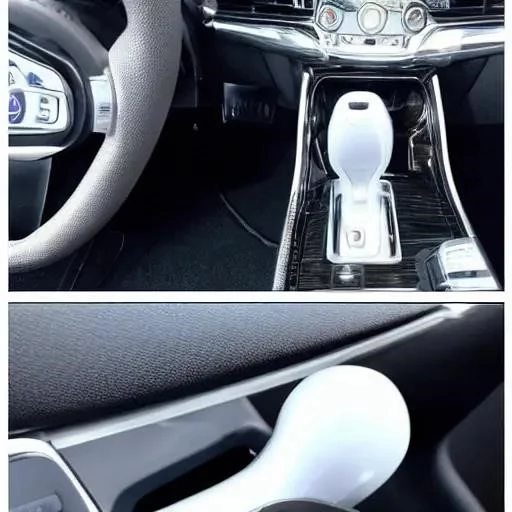In an automotive landscape increasingly dominated by seamless automatics, sophisticated electric vehicles, and autonomous driving aspirations, the venerable stick shift has long been whispered about as a relic of a bygone era. Yet, remarkably, amidst prognostications of its inevitable demise, the manual transmission car continues to clutch a significant, albeit niche, market share, particularly among those who cherish the visceral connection to the road. This isn’t merely a tale of stubborn nostalgia; it’s a compelling narrative of enduring appeal, strategic market positioning, and a passionate community of drivers refusing to relinquish control.
While the overall market share for manual transmissions has undeniably receded in many Western markets over the past two decades, influenced heavily by technological advancements and shifting consumer preferences towards convenience, a closer examination reveals a surprising resilience. Enthusiasts, cost-conscious buyers, and even certain performance segments are actively preserving this traditional driving art. Far from being a mere historical footnote, the manual gearbox is strategically positioning itself as a premium option for engagement, a practical choice for simplicity, and an economical alternative in a world increasingly burdened by complexity and high-tech overheads. Understanding this dynamic interplay of factors is crucial to appreciating its surprising longevity.
Manual Transmission Market Insights
| Category | Information/Trend |
|---|---|
| Global Market Share (Avg.) | Estimated 5-15% globally, with significant variations (e.g., higher in Europe/Asia, lower in North America). |
| Key Drivers for Choice | Enhanced driving engagement, precise control, generally lower purchase/maintenance costs, perceived reliability, enthusiast appeal. |
| Primary Decline Factors | Rise of advanced automatic transmissions (CVT, DCT, 8-10 speed), driver convenience in traffic, increasing EV market share, declining driver education for manuals. |
| Niche Markets Stronghold | Sports cars, performance vehicles, entry-level economy models, certain commercial vehicles, and driving schools in specific regions. |
| Future Outlook | Likely to persist as a valued enthusiast option and a cost-effective choice, rather than regaining mass-market dominance. Potential for niche growth in simplicity-focused segments. |
| Reference Link | Car and Driver — Manual Transmission Sales Trends |
The allure of the manual transmission, often described by aficionados as an extension of the driver’s will, transcends mere transportation. It’s an immersive dance between human and machine, requiring coordination and intuition that modern automatics, however sophisticated, simply cannot replicate. “Driving a manual car provides an unparalleled sense of engagement, connecting you to the mechanics of the vehicle in a way that’s increasingly rare,” observes David Smith, an automotive historian and long-time manual driver. This deeply personal connection, fostering skill development and a heightened awareness of road conditions, forms the bedrock of its enduring appeal. For many, it’s not just about getting from point A to point B; it’s about the journey itself, punctuated by the satisfying snick of a gear change and the rhythmic ebb and flow of engine revs.
Economically, manual transmissions frequently present a more budget-friendly option, both at the point of purchase and over the vehicle’s lifespan. Their simpler mechanical construction often translates to lower manufacturing costs for automakers, savings that are then passed on to consumers. Furthermore, their historical reputation for robustness and easier maintenance contributes to a perceived long-term value. In an era where vehicle prices are consistently escalating, the manual option offers a tangible benefit for buyers prioritizing frugality without sacrificing driving enjoyment. This pragmatic advantage, especially evident in entry-level models and developing markets, underpins a crucial segment of its persistent market presence.
Globally, the picture of manual transmission adoption is surprisingly varied. While North America has seen a dramatic decline, with some estimates putting its market share below 3%, European and Asian markets, particularly in countries like Germany, Italy, and India, still exhibit a far stronger preference for the stick shift. This regional disparity is largely attributed to different driving cultures, road infrastructures, and economic considerations. In cities with winding roads or in regions where fuel efficiency remains a paramount concern, the manual’s traditional strengths shine through. Forward-thinking manufacturers, recognizing these nuanced preferences, continue to offer manual options in their performance and budget lines, effectively catering to these distinct consumer bases.
Looking ahead, the future of the manual transmission is not one of mass-market recapture, but rather of a celebrated, cherished niche. As the automotive industry irrevocably shifts towards electrification and increasing autonomy, the manual gearbox stands poised to become an even more unique proposition—a tangible counterpoint to the digital, automated future. Imagine a world where the act of driving itself, rather than merely being transported, becomes a luxury experience, a skill to be honed and savored. The manual transmission, with its inherent demand for driver involvement, is perfectly positioned to fulfill this evolving desire. It offers an authentic, unplugged driving experience, much like an artisan craft maintaining its relevance against mass production.
Ultimately, the enduring market share of manual transmission cars is a testament to more than just tradition; it reflects a deep-seated human desire for control, engagement, and simplicity in an increasingly complex world. While it may never again dominate sales charts, its resilience confirms that for a dedicated cohort of drivers, the joy of shifting gears remains an irreplaceable element of the driving experience. This isn’t a story of stagnation, but of a vibrant, evolving niche that promises to keep the spirit of pure driving alive for generations to come, reminding us that sometimes, the most profound experiences are those we actively shape ourselves.






